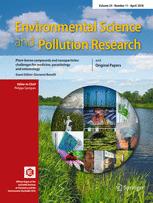Ver ítem
- xmlui.general.dspace_homeCentros Regionales y EEAsCentro Regional Buenos Aires SurEEA Hilario AscasubiArtículos científicosxmlui.ArtifactBrowser.ItemViewer.trail
- Inicio
- Centros Regionales y EEAs
- Centro Regional Buenos Aires Sur
- EEA Hilario Ascasubi
- Artículos científicos
- Ver ítem
Transgene escape and persistence in an agroecosystem: the case of glyphosate-resistant Brassica rapa L. in central Argentina
Resumen
Brassica rapa L. is an annual Brassicaceae species cultivated for oil and food production, whose wild form is a weed of crops worldwide. In temperate regions of South America and especially in the Argentine Pampas region, this species is widely distributed. During 2014, wild B. rapa populations that escaped control with glyphosate applications by farmers were found in this area. These plants were characterized by morphology and seed acidic profile, and
[ver mas...]
Brassica rapa L. is an annual Brassicaceae species cultivated for oil and food production, whose wild form is a weed of crops worldwide. In temperate regions of South America and especially in the Argentine Pampas region, this species is widely distributed. During 2014, wild B. rapa populations that escaped control with glyphosate applications by farmers were found in this area. These plants were characterized by morphology and seed acidic profile, and all the characters agreed with B. rapa description. The dose-response assays showed that the biotypes were highly resistant to glyphosate. It was also shown that they had multiple resistance to AHAS-inhibiting herbicides. The transgenic origin of the glyphosate resistance in B. rapa biotypes was verified by an immunological test which confirmed the presence of the CP4 EPSPS protein and by an event-specific GT73 molecular marker. The persistence of the transgene in nature was confirmed for at least 4 years, in ruderal and agrestal habitats. This finding suggests that glyphosate resistance might come from GM oilseed rape crops illegally cultivated in the country or as a seed contaminant, and it implies gene flow and introgression between feral populations of GM B. napus and wild B. rapa. The persistence and spread of the resistance in agricultural environments was promoted by the high selection pressure imposed by intensive herbicide usage in the prevalent no-till farming systems.
[Cerrar]

Autor
Pandolfo, Claudio Ezequiel;
Presotto, Alejandro Daniel;
Torres Carbonell, Francisco Javier;
Ureta, Maria Soledad;
Poverene, María Mónica;
Cantamutto, Miguel Angel;
Fuente
Environmental Science and Pollution Research 25 (7) : 6251–6264 (March 2018)
Fecha
2018-03
ISSN
0944-1344
1614-7499
1614-7499
Formato
pdf
Tipo de documento
artículo
Palabras Claves
Derechos de acceso
Restringido
 Excepto donde se diga explicitamente, este item se publica bajo la siguiente descripción: Creative Commons Attribution-NonCommercial-ShareAlike 2.5 Unported (CC BY-NC-SA 2.5)
Excepto donde se diga explicitamente, este item se publica bajo la siguiente descripción: Creative Commons Attribution-NonCommercial-ShareAlike 2.5 Unported (CC BY-NC-SA 2.5)

